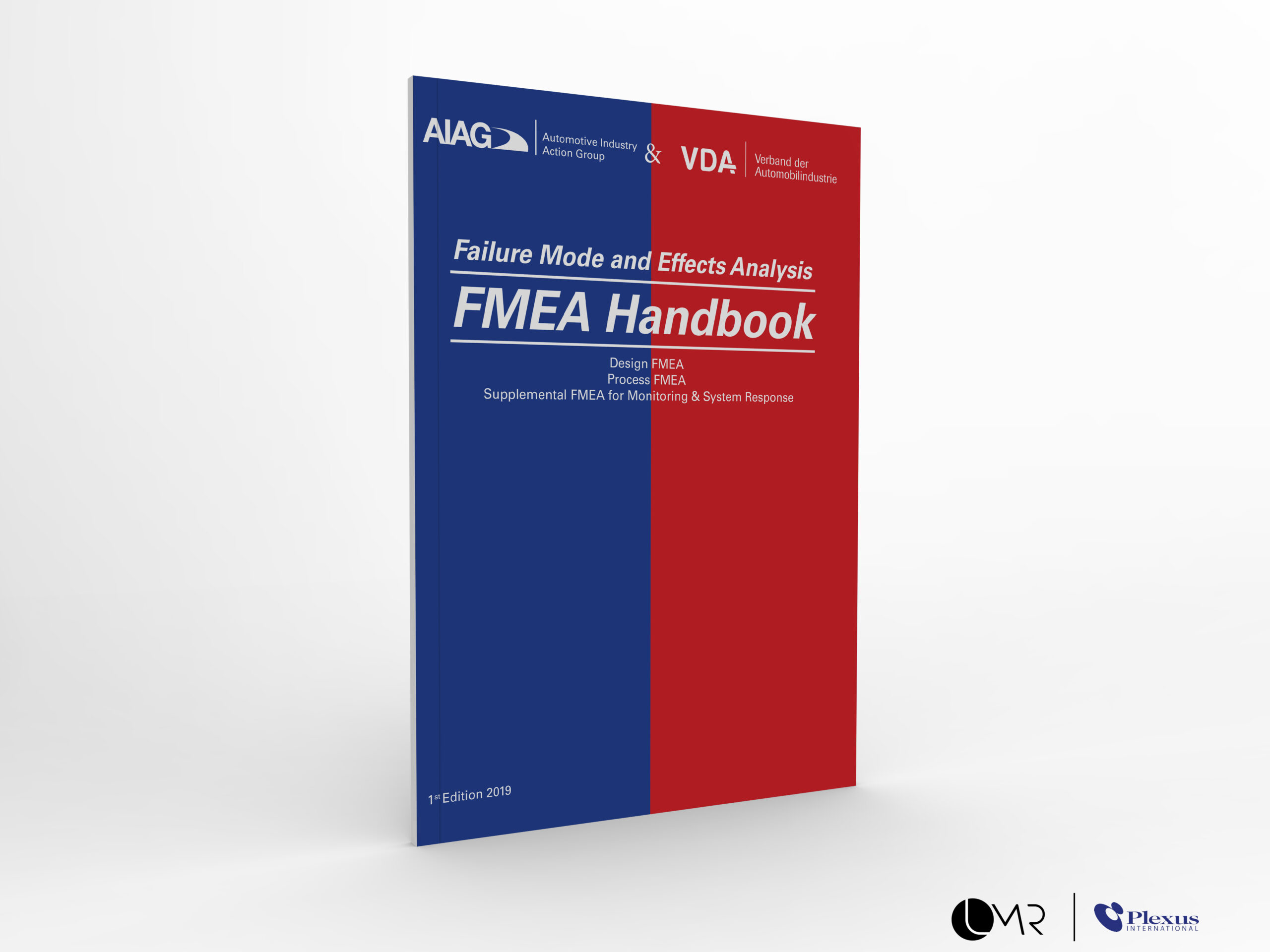Description
New AIAG & VDA FMEA Handbook – Purchase Today!
Product Information
Product Code: FMEAAV-1
Revision: 1st Edition, 2019
Published Date: June 2019
Status: Active, Most Current
Document Language: English
Published By: Automotive Industry Action Group (AIAG) & German Association of the Automotive Industry (VDA)
What is The New AIAG VDA FMEA Handbook
Failure Mode and Effects Analysis (FMEA) is a team-oriented, systematic, qualitative, and analytical method intended to identify, analyse, and mitigate technical risks related to product and manufacturing process design. It supports the five Advanced Product Quality Planning (APQP) phases to improve customer satisfaction by highlighting defect prevention.
A new version of the FMEA method, AIAG-VDA FMEA Handbook 1st Edition is replacing the previous version – AIAG FMEA Manual 4th Edition.
Why the FMEA manual has been revised?
The FMEA manual has been redeveloped with the sustainability of the automotive supply chain in mind. The purpose of the development of the new AIAG-VDA FMEA Handbook 1st Edition is to provide a more robust methodology to address product and manufacturing process risks, while considering the complexity of multiple OEM-specific and regulatory requirements, and increasingly demanding customer expectations for better and more innovative products. AIAG and VDA FMEA manuals have been combined into a joint publication to take these factors into account.
This new FMEA methodology is integrated into a single co-copyrighted handbook that takes the best practices from AIAG and VDA using a process-oriented approach to develop Design and Process FMEAs that meet requirements for both industry groups. Hence, the application of the AIAG-VDA FMEA 1st Edition Handbook will enable suppliers to effectively address technical risks during the Product and Process Development process by developing a robust, accurate, and complete DFMEA and PFMEA that will fulfill the needs of all customers.
AIAG VDA FMEA Handbook benefits at a glance
- The 7- Step Structured Approach
- Leverages lessons learned
- Error-proofing driven
Structured Approach
The most significant change in the AIAG-VDA FMEA 1st Edition Handbook is the new approach for FMEA development: the 7-step Approach. It provides a structured framework for documentation of technical risks in a precise, relevant, and complete manner. This new framework is precise because of its use of technical terms to describe failure modes and its potential causes. It is relevant because the failure effects describe technical consequences of failures. Lastly, it is complete because of its use of the focus element, which includes both an upper and lower level approach, enabling a comprehensive review of the risks.
Benefits of the structured approach
The 7-step Approach is more structured, and highly instrumental in increasing a multidisciplinary team’s effectiveness and efficiency:
- More risks can be addressed in a comprehensive manner
- Multidisciplinary reviews of the FMEA become engaging “technical guided reflections” instead of an “unfocused brainstorm”, avoiding an attitude of discouragement related to FMEA
- Enables senior management to comprehend and review necessary actions and resources to mitigate technical risks
Leverages Lessons Learned
Another major difference is the enhanced direction of FMEA Planning and Preparation; the 1st step of FMEA development. While defining the scope has always been part of the FMEA development, the AIAG-VDA FMEA Handbook gives it increased prominence. For example, determining analysis boundaries (what is included and what is excluded), application of 5T’s (FMEA InTent, Timing, Team, Tasks, Tools), preparation of baseline FMEAs with lessons learned, and clear definition of roles and responsibilities (management, technical lead, facilitator, team members) are now more explicitly included in FMEA preparation.
Benefits of lessons learned
Enhanced planning and preparation will allow you to avoid wasting time of the multidisciplinary team due to lack of focus and relevant information availability.
Baseline FMEA benefits are:
- Mitigate the risk of past failures recurrences due to loss of knowledge related to turnover and retirement
- Save time in FMEA preparation as the baseline FMEA is a robust starting point for FMEA in similar products and processes
- Enable practicality in the concept of “FMEA as a living document”
- Clarity for management to estimate and allocate resources to standardize lessons learned
Error-proofing Driven
The new AIAG-VDA FMEA Handbook includes more specificity in the criteria to determine levels for Severity, Occurrence, and Detection ratings. For example, consideration of confirmation of effectiveness of current prevention and detection controls, product and process experience, and detection method maturity are now included in the criteria.
In addition, Action Priority (AP) replaces RPN’s (Risk Priority Numbers). Examination of S, O, and D ratings individually and in combinations of the three factors for risk-reducing actions prioritized as High, Medium or Low. A High priority is a request for risk mitigation actions to improve prevention / detection controls or justification why current controls are adequate
Benefits of error proofing
AP levels based on combination of S, O, and D ratings clearly favors error-proofing. AP is considered High or Medium for severity and occurrence moderate ranks, even when detection controls are effective.
New FMEA is actionable. Implementing error-proofing solutions is the fastest path to downgrade AP levels from High to Medium and Medium to Low.
About The Core Tools in General
Over 30 years ago, AIAG collaborated with the domestic auto manufacturers to develop common quality methods and tools, which became known as the Quality Core Tools. The tools proved so useful that they were adopted by other manufacturing sectors, including aerospace, defence, medical, and pharmaceuticals.
The Automotive Quality Core Tools are the building blocks of an effective quality management system. They include Advanced Product Quality Planning & Control Plan (APQP), Product Part Approval Process (PPAP), Failure Mode and Effects Analysis (FMEA), Measurement System Analysis (MSA), and Statistical Process Control (SPC).
LMR Global Limited are can offer the Core Tool Manuals (Automotive Blue Books) and CQI documents under their partnership agreement with Plexus International as an AIAG Certified Distributor.


